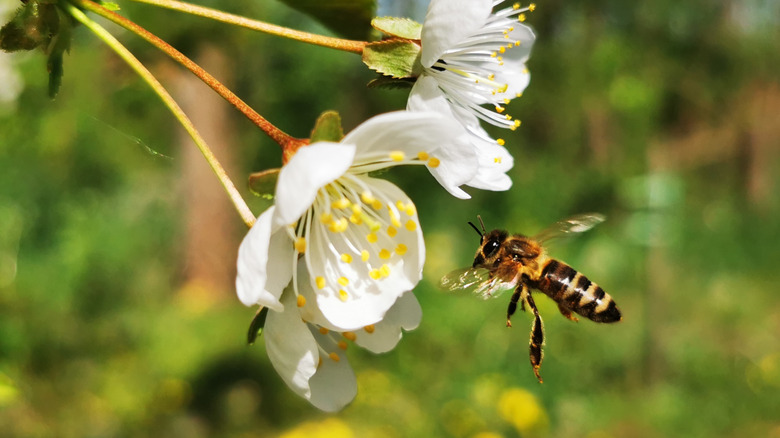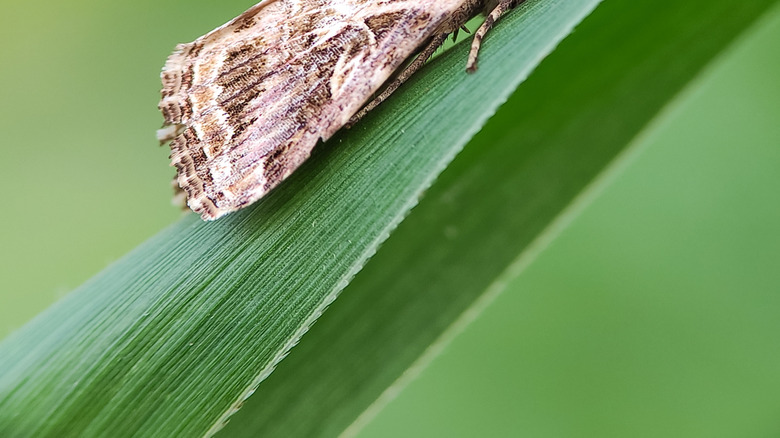Scientists Say That Stressed Plants Cry, And Your Pets Can Likely Hear It
Even though we know plants are living beings, it's easy to overlook them as just a passive part of the landscape. But a growing body of research is starting to suggest the trees and flowers in your garden are actively observing and potentially even communicating with the world around them — just not in ways that are easy for humans to interpret. For example, did you know that plants make audible noises when they get stressed out? That is, audible to a select group of critters capable of hearing ultrasonic frequencies – bats, mice, moths, and your dog are among that group, but humans are not.
In a study published in Cell, researchers placed tobacco and tomato plants in boxes equipped with microphones and found that plants lacking water produced sounds similar to popping popcorn, while properly hydrated plants remained quieter. The recordings are likely picking up a process called cavitation, in which air bubbles form and then collapse inside the tubes that transport water and nutrients throughout a plant's body. It's important to note that this process happens as a result of the environment, not something that plants do intentionally to "cry."
That said, this new study is among the first to hint that cavitation can create airborne vibrations that are loud enough for some animals to hear. Just because plants may not be "crying" through the same mechanism a human baby might cry out of thirst doesn't mean plants don't communicate or that those noises aren't useful to their neighbors.
Plants may be more talkative than previously thought
You may think it's a stretch to call the popping sounds a dehydrated plant makes "crying," but new research suggests they do actually communicate with the insects, animals, and other plants in their environment — albeit through different means. So far, most plant communication seems to happen through chemicals. For example, a plant being devoured by a pest can emit a unique scent that communicates detailed information about the type of pest eating it and how many of them are there. Insects and other plants have been shown to detect and respond to those scents. In other words, an infested plant can call out for help from insect predators and warn its neighbors so that other plants bolster their defense mechanisms before they get infested, too.
While the research on airborne sounds is limited compared to that on chemical signaling, plant bioacoustics studies have found surprising evidence that plants can also pick up on vibrations in the soil or in their leaves and stems. When a pest munches on a leaf, for example, the plant senses the vibrations of those bites and starts launching chemical defenses. Likewise, some plants release extra sugar with their nectar when they detect the buzz of a bee. Other research shows that plant roots may be able to locate water underground by sensing the vibrations of flowing water.
If plants are crying, is anybody listening?
If plants are talking, the next question is whether anybody is listening. Some early research says they might be. In a study by bioRxiv, when given a choice between a silent, hydrated tomato plant and a "crying" dehydrated one, female moths consistently laid more eggs on the quieter plant. When researchers removed the plants and placed speakers in a room with one side silent and the other playing recordings of distressed plants, moths laid their eggs near the speaker making the distressed sounds.
They theorize that in the otherwise artificial environment, the only evidence of life was the recorded "cries" of a drought-stressed plant. The moths may have decided that was the best available option. If so, it seems moths not only recognize that these sounds are made by plants, but also that they say something about the plant's health. These lesser-known garden pollinators are vital for the reproduction of night-blooming flowers, so if you want to create a moon garden, making sure your plants are healthy and hydrated enough to pass the scrutiny of moths may be key.
While other animals and insects can hear ultrasonic sounds, there's little research on whether they tune into plant noises to make decisions about, say, which leaves would make the juiciest snack. However, the amount of much louder background noise in any given environment would all but drown out those "cries" unless the listener is right next to the plant. It might be more likely that insects and animals rely more on other signals plants send out.


